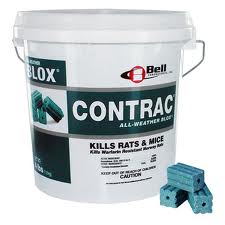vole control
Meadow Voles maintain above ground runways, which can expand extensively. Underground nests can be deep into the ground and are used for food storage, offspring raising, and as a place for rest and sleep. Found in a wide variety of open habitats including moist meadows, forest steppe, moist forest and sometimes agricultural areas. It feeds mainly on the green parts of grasses and herbaceous plants, and is a serious agricultural pest in some areas. Baiting can be best accomplished in any season, but success will occur when their other food sources are limited (grasses, seeds, roots, herbs, grains).
The most effective way to prevent voles is to keep lawns, vegetation and cultivated areas well-trimmed by mowing, spraying or grazing. Eliminate weeds, ground cover and litter in and around crops and lawns to reduce the capacity of those areas to support voles.Keep mulch at least three feet from the bases of trees. Soil tillage is also helpful as it destroys existing burrow systems.
Voles can cause extensive damage to orchards, tree plantings, and field crops. Voles eat crops and also damage them when they build extensive runway and tunnel systems. Voles also can ruin lawns, golf courses and ground covers. Voles rarely come in contact with humans and therefore pose no major public health hazards; however, they are capable of carrying disease organisms, such as plague and tularemia.
Rodent & Animal Control
The number one rodent bait in professional pest control, Contrac® All-Weather Blox™, is now available with an amended label for approved use on 11 additional species. The expanded label includes Peromyscus (deer mouse, cotton mouse and white footed mouse), meadow voles and other invasive rodent species, including:
• Cotton rats
• Eastern harvest mouse
• Golden mouse
• Polynesian rat
• White-throated woodrat
• Southern plains woodrat
• Mexican woodrat
The expanded label provides Pest Management Professionals (PMPs) with greater flexibility to obtain control against invasive non-commensal rodent species while closely adhering to label guidelines. The revision comes after a recent U.S. Environmental Protection Agency (EPA) decision that lifts a previous ban against the use of rodenticides on pests other than house mice, Norway rats and roof rats.

